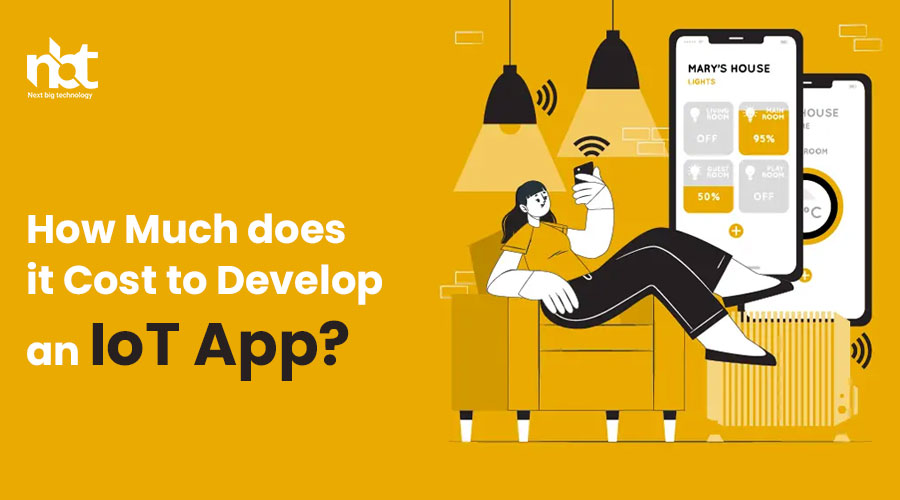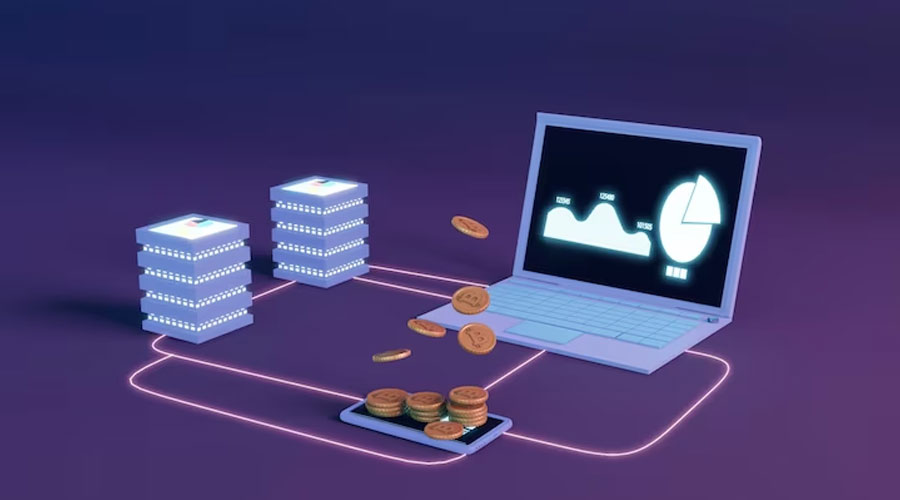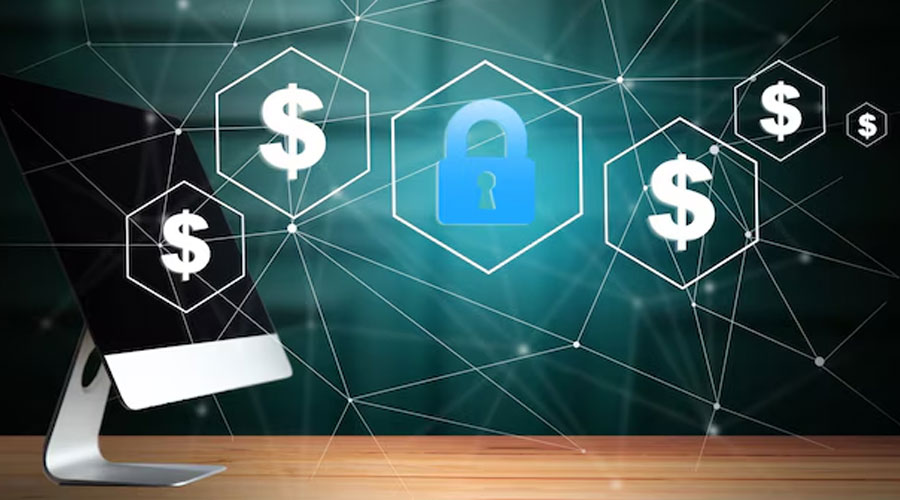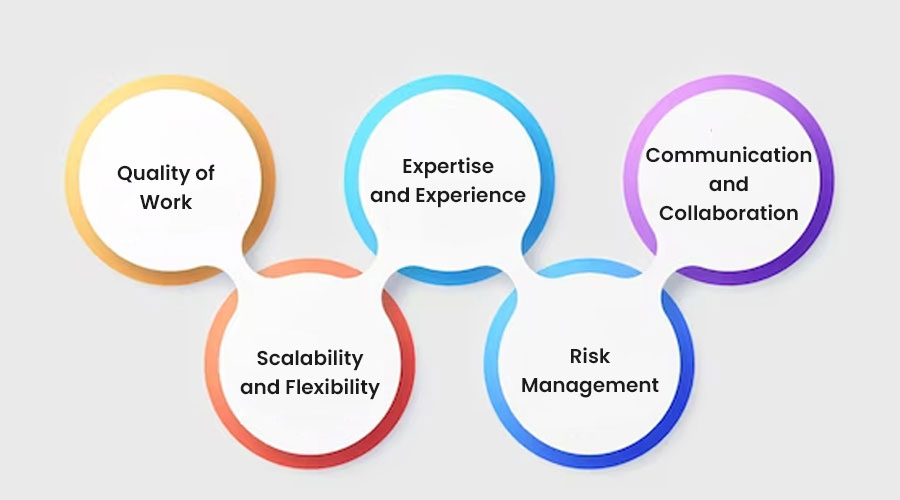Table of Contents
Understanding IoT App Development Costs
In today’s digital age, the Internet of Things (IoT) has emerged as a revolutionary technology that’s transforming various industries, from healthcare to manufacturing and beyond. At the heart of this innovation lies IoT applications, which enable devices to communicate, collect, and exchange data seamlessly. However, one common question that arises when delving into IoT implementation is: What are the costs associated with developing IoT applications?
Understanding the factors influencing IoT app development costs is crucial for businesses looking to leverage this technology effectively. Let’s explore the key components that contribute to the overall cost of IoT app development:
- Complexity of Functionality: The complexity of desired functionalities significantly impacts the cost of IoT app development. Basic IoT applications with limited features will naturally cost less compared to complex applications requiring advanced functionalities such as real-time data analytics, machine learning algorithms, and integration with multiple devices.
- Hardware Requirements: Hardware components are integral to IoT ecosystems. The cost of sensors, microcontrollers, communication modules, and other hardware components can vary based on factors such as quality, quantity, and compatibility. Additionally, custom hardware designs or specialized sensors may incur additional expenses.
- Software Development: Developing the software infrastructure for IoT applications involves various stages, including backend development, frontend development, database management, and API integration. The complexity of coding, customization requirements, and the expertise of developers involved influence the overall cost.
- Data Security: Ensuring robust security measures is paramount in IoT app development to protect sensitive data and prevent unauthorized access. Implementing encryption protocols, secure authentication mechanisms, and regular security updates incur additional costs but are essential for safeguarding IoT ecosystems against potential threats.
- Scalability and Integration: Future scalability and seamless integration with existing systems or third-party platforms are critical considerations in IoT app development. Building scalable architectures and incorporating interoperability features may entail higher initial costs but can save expenses in the long run by facilitating future expansions and integrations.
- Regulatory Compliance: Compliance with regulatory standards and industry-specific regulations adds another layer of complexity to IoT app development. Ensuring adherence to data protection laws, privacy regulations, and industry standards may require additional resources and expertise, thereby impacting development costs.
- Testing and Maintenance: Thorough testing and ongoing maintenance are indispensable aspects of IoT app development. Conducting comprehensive testing to identify and rectify bugs, ensuring compatibility across diverse devices and platforms, and providing regular updates and maintenance services contribute to the overall cost.
- Third-party Services: Depending on project requirements, leveraging third-party services such as cloud platforms, analytics tools, and middleware solutions may be necessary. While these services offer convenience and advanced functionalities, they incur additional expenses that should be factored into the overall budget.
Understanding the nuances of IoT app development costs empowers businesses to make informed decisions and allocate resources effectively. By collaborating with experienced IoT development partners, businesses can navigate the complexities of IoT implementation, optimize costs, and unlock the full potential of this transformative technology.
Factors Influencing IoT App Development Expenses
In the ever-evolving landscape of technology, the Internet of Things (IoT) has emerged as a transformative force, revolutionizing various industries with its ability to connect devices and collect data for enhanced efficiency and productivity. As businesses increasingly recognize the potential of IoT applications, the demand for IoT app development has surged. However, understanding the factors that influence the expenses associated with developing IoT apps is crucial for businesses to plan and budget effectively.
- Complexity of Functionality: One of the primary factors influencing IoT app development expenses is the complexity of functionality required. The more intricate the features and functionalities desired in the IoT application, the higher the development costs. Complex functionalities such as real-time data processing, machine learning algorithms, and integration with multiple devices can significantly increase development time and resources, thus impacting costs.
- Integration Requirements: The integration of IoT applications with existing systems, hardware, and software solutions can also impact development expenses. Compatibility issues, customization requirements, and the need for seamless integration with various devices and platforms can add complexity to the development process, resulting in higher costs.
- Data Security and Privacy: With the proliferation of IoT devices collecting sensitive data, ensuring robust security and privacy measures within the application is paramount. Implementing encryption protocols, secure authentication mechanisms, and compliance with data protection regulations incur additional expenses during development. Investing in robust security measures is essential to safeguard sensitive data and protect against potential cyber threats.
- Scalability and Flexibility: Building IoT applications that are scalable and flexible to accommodate future growth and technological advancements is essential for long-term viability. Designing scalable architectures, incorporating modular components, and implementing flexible APIs incur additional costs during development but can significantly reduce future expenses associated with system upgrades and expansions.
- User Experience (UX) Design: A seamless and intuitive user experience is crucial for the success of IoT applications. Investing in UX design to create user-friendly interfaces, intuitive navigation, and engaging interactions enhances user satisfaction and adoption rates. However, incorporating sophisticated UX design elements and conducting usability testing can increase development costs.
- Hardware and Connectivity: The choice of hardware components, sensors, and communication protocols significantly impacts IoT app development expenses. High-quality hardware components and reliable connectivity solutions may entail higher upfront costs but contribute to the overall performance and reliability of the application.
- Development Platform and Tools: The selection of development platforms, tools, and frameworks also influences development expenses. Choosing scalable and feature-rich development platforms, as well as utilizing specialized IoT development tools and frameworks, can streamline the development process but may require licensing fees or additional expenses.
- Regulatory Compliance: Compliance with industry standards, regulations, and certifications adds another layer of complexity and expense to IoT app development. Ensuring compliance with regulations such as GDPR, HIPAA, or industry-specific standards requires additional resources for documentation, auditing, and validation processes.
Hardware Costs in IoT App Development
In the ever-evolving landscape of technology, the Internet of Things (IoT) has emerged as a game-changer, revolutionizing the way we interact with devices and the world around us. From smart homes to industrial automation, IoT applications have become increasingly prevalent in various sectors. However, behind the seamless connectivity lies a crucial aspect that often goes unnoticed: hardware costs in IoT app development.
Understanding the intricacies of hardware costs is essential for businesses and developers embarking on IoT projects. In this comprehensive guide, we’ll delve into the factors influencing hardware costs and strategies to optimize them for successful IoT app development.
- Hardware Components: The foundation of any IoT application lies in its hardware components. These can range from sensors and actuators to microcontrollers and communication modules. The cost of these components varies depending on factors such as quality, functionality, and scalability. While off-the-shelf components offer convenience, custom-designed hardware may be necessary for specialized applications, albeit at a higher cost.
- Scalability Requirements: Scalability is a crucial consideration in IoT projects, as applications often need to accommodate a growing number of devices and users. Hardware costs can escalate significantly with increased scalability requirements. Therefore, it’s vital to assess scalability needs early in the development process and choose hardware solutions that can scale efficiently without incurring prohibitive costs.
- Connectivity Options: IoT devices rely on various connectivity options, including Wi-Fi, Bluetooth, cellular, and LPWAN (Low Power Wide Area Network). The choice of connectivity technology influences hardware costs, with cellular and LPWAN solutions typically being more expensive than Wi-Fi and Bluetooth. Evaluating the trade-offs between cost, range, and power consumption is essential for selecting the most cost-effective connectivity option.
- Power Consumption: Power consumption is a critical consideration in IoT deployments, especially for battery-powered devices or applications where energy efficiency is paramount. Low-power hardware components may come at a premium compared to their counterparts, but they can lead to long-term cost savings by extending battery life and reducing maintenance overhead.
- Security and Compliance: Security is a top priority in IoT applications, particularly in sectors such as healthcare, finance, and critical infrastructure. Hardware solutions with built-in security features often command a higher price but are essential for safeguarding sensitive data and protecting against cyber threats. Additionally, compliance with industry regulations and standards may necessitate the use of specific hardware components, adding to the overall cost.
- Lifecycle Management: The lifecycle management of IoT devices encompasses provisioning, monitoring, updates, and decommissioning. Hardware costs extend beyond the initial purchase to include ongoing maintenance and support throughout the device’s lifespan. Choosing hardware vendors that offer robust lifecycle management capabilities can help minimize long-term costs and ensure the longevity of IoT deployments.
- Total Cost of Ownership (TCO): Assessing the total cost of ownership is critical for evaluating the economic viability of IoT projects. Hardware costs represent just one aspect of the TCO, which also includes development expenses, operational costs, and potential revenue generation. By conducting a thorough TCO analysis, businesses can make informed decisions and optimize their investments in IoT app development.
Software Development Expenses for IoT Applications
In the ever-expanding landscape of technology, the Internet of Things (IoT) stands out as a revolutionary concept, promising interconnectedness and automation like never before. However, amidst the excitement of creating IoT applications, there lies a crucial aspect that often gets overlooked: the expenses associated with software development. In this article, we delve into the intricacies of software development expenses for IoT applications, shedding light on the key factors that influence costs and offering insights into optimizing expenditure.
- Complexity of the Application: The complexity of an IoT application plays a significant role in determining its development costs. Applications that require intricate data processing, real-time analytics, or integration with numerous devices tend to incur higher expenses due to the expertise and resources required to implement such functionalities.
- Hardware Requirements: Unlike traditional software applications, IoT applications often necessitate hardware components such as sensors, actuators, and microcontrollers. The cost of these hardware elements, coupled with their integration into the software ecosystem, contributes to the overall development expenses.
- Connectivity Protocols and Standards: IoT applications rely on various connectivity protocols such as Wi-Fi, Bluetooth, Zigbee, LoRa, etc. The choice of protocol depends on factors like range, power consumption, and data transfer rate. Implementing and adhering to these protocols and standards adds to the development costs.
- Security Measures: Security is paramount in IoT applications, considering the sensitive nature of the data being transmitted and processed. Implementing robust security measures, including encryption, authentication mechanisms, and secure data storage, entails additional expenses but is indispensable for safeguarding against potential threats.
- Scalability and Maintenance: An IoT application should be designed with scalability in mind to accommodate future growth and expansion. Building a scalable architecture incurs higher initial costs but pays off in the long run by minimizing rework and facilitating seamless scalability. Moreover, ongoing maintenance and updates to ensure optimal performance also contribute to the overall expenses.
- Regulatory Compliance: Depending on the industry and geographical location, IoT applications may be subject to specific regulatory requirements and standards. Compliance with these regulations necessitates additional resources and efforts, thereby impacting the development costs.
- Integration with Third-party Services: Many IoT applications rely on integration with third-party services such as cloud platforms, analytics tools, and payment gateways. While leveraging these services can enhance functionality and efficiency, it also adds to the overall expenditure through subscription fees or licensing costs.
- Development Team Composition: The expertise and experience of the development team significantly influence the costs of software development. Hiring skilled professionals, including software developers, hardware engineers, data scientists, and cybersecurity experts, comes with a price tag that contributes to the overall project expenses.
Data Security and Compliance Costs
In today’s digitally driven world, data security and compliance have become paramount concerns for businesses of all sizes. With the ever-increasing volume and complexity of data breaches, coupled with stringent regulatory requirements, the costs associated with ensuring data security and compliance continue to escalate. In this article, we’ll delve into the intricacies of data security and compliance costs, exploring the challenges they pose and offering practical insights on how businesses can effectively navigate this landscape.
Understanding Data Security and Compliance Costs
Data security involves safeguarding sensitive information from unauthorized access, use, disclosure, disruption, modification, or destruction. Compliance, on the other hand, refers to adhering to relevant laws, regulations, and standards governing data protection and privacy.
The costs associated with data security and compliance encompass a wide range of factors, including:
- Technology Infrastructure: Investing in robust cybersecurity technologies such as firewalls, encryption software, intrusion detection systems, and access controls is essential for safeguarding data. However, acquiring and maintaining these technologies can entail significant upfront and ongoing expenses.
- Personnel: Employing skilled cybersecurity professionals to monitor, manage, and respond to security threats is crucial. The demand for cybersecurity talent often outstrips supply, leading to high salaries and recruitment costs.
- Training and Awareness Programs: Educating employees about security best practices and compliance requirements is vital for mitigating risks. Developing and implementing comprehensive training programs can incur expenses related to content development, delivery, and employee downtime.
- Compliance Audits and Assessments: Regular audits and assessments are necessary to ensure adherence to regulatory requirements and industry standards. Engaging third-party auditors or investing in internal compliance teams involves financial outlays.
- Legal and Regulatory Expenses: Legal counsel may be required to interpret complex regulations, provide guidance on compliance strategies, and represent the organization in the event of legal proceedings or regulatory inquiries.
- Incident Response and Remediation: Despite best efforts, data breaches and security incidents may occur. The costs associated with investigating breaches, notifying affected parties, implementing remediation measures, and mitigating reputational damage can be substantial.
Strategies for Managing Data Security and Compliance Costs
While the costs of data security and compliance can be daunting, businesses can adopt several strategies to manage them effectively:
- Risk-Based Approach: Conduct a comprehensive risk assessment to identify and prioritize potential threats and vulnerabilities. Allocate resources based on the level of risk posed to critical assets and systems.
- Compliance Automation: Leverage technology solutions to automate compliance processes such as risk assessments, policy management, and regulatory reporting. Automation can streamline workflows, reduce human error, and lower operational costs.
- Cloud-Based Solutions: Consider outsourcing data storage and security functions to reputable cloud service providers. Cloud-based solutions offer scalability, flexibility, and cost efficiencies, allowing businesses to pay only for the resources they consume.
- Vendor Management: Evaluate the security posture of third-party vendors and service providers before engaging them. Implement contractual agreements that outline security requirements and responsibilities, ensuring compliance with applicable regulations.
- Continuous Monitoring and Improvement: Implement robust monitoring tools and processes to detect and respond to security incidents in real-time. Regularly review and update security policies, procedures, and controls to adapt to evolving threats and regulatory changes.
- Employee Education and Awareness: Invest in ongoing training programs to educate employees about cybersecurity best practices, data privacy regulations, and their roles in protecting sensitive information. Empowered employees can serve as the first line of defense against cyber threats.
Connectivity Costs: IoT Protocols and Infrastructure
In the realm of the Internet of Things (IoT), where billions of devices are expected to be interconnected, understanding connectivity costs is paramount. At the heart of this understanding lie IoT protocols and infrastructure, which form the backbone of communication between devices. Let’s delve into the intricacies of these components to navigate the landscape effectively.
The Significance of IoT Protocols
IoT protocols serve as the communication languages that devices use to exchange data. Choosing the right protocol can significantly impact connectivity costs and overall efficiency. Here are some key protocols dominating the IoT sphere:
- MQTT (Message Queuing Telemetry Transport): Renowned for its lightweight nature, MQTT excels in scenarios where bandwidth is limited or connectivity is unreliable. Its efficient publish-subscribe model minimizes data overhead, making it ideal for resource-constrained devices.
- HTTP (Hypertext Transfer Protocol): Widely recognized for its simplicity and compatibility with existing web infrastructure, HTTP facilitates communication over the internet. However, its stateful nature and higher overhead may not be suitable for all IoT applications, particularly those requiring real-time responsiveness.
- CoAP (Constrained Application Protocol): Tailored for constrained devices operating in low-power, low-bandwidth environments, CoAP offers efficient message delivery and supports RESTful principles. Its lightweight design makes it suitable for IoT deployments where resource efficiency is paramount.
- AMQP (Advanced Message Queuing Protocol): Designed for robust and reliable messaging, AMQP is suited for enterprise-grade IoT deployments requiring secure and scalable communication. Its support for message queuing and routing ensures message delivery even in challenging network conditions.
Infrastructure Considerations
Beyond protocols, the underlying infrastructure plays a crucial role in determining connectivity costs and reliability. Several factors influence infrastructure decisions:
- Edge Computing: By processing data closer to its source, edge computing reduces the need for extensive data transmission, lowering connectivity costs and latency. Leveraging edge computing can be particularly beneficial for IoT applications requiring real-time insights or operating in remote environments with limited connectivity.
- Scalable Networking Solutions: As IoT deployments scale, networking infrastructure must accommodate increasing traffic volumes without compromising performance. Cloud-based networking solutions offer scalability and flexibility, allowing organizations to adapt to evolving connectivity requirements seamlessly.
- Security Measures: Robust security measures are indispensable in safeguarding IoT ecosystems against cyber threats. Implementing encryption, authentication, and access control mechanisms mitigates the risk of data breaches and unauthorized access, albeit at additional infrastructure costs.
Balancing Costs and Performance
Achieving optimal connectivity in IoT deployments entails striking a delicate balance between costs and performance. Here are some strategies to optimize connectivity costs:
- Protocol Selection: Choose protocols that align with specific application requirements while minimizing overhead and maximizing efficiency.
- Infrastructure Optimization: Invest in infrastructure that offers scalability, reliability, and security without inflating operational costs unnecessarily.
- Data Management Practices: Implement data management practices that prioritize relevant information and minimize unnecessary transmissions, reducing bandwidth consumption and associated costs.
- Continuous Monitoring and Optimization: Regularly monitor network performance and usage patterns to identify inefficiencies and opportunities for optimization. Adjust infrastructure and protocol configurations accordingly to maintain cost-effective connectivity.
Testing and Quality Assurance Expenses for IoT Apps
In the rapidly evolving landscape of IoT (Internet of Things) applications, ensuring the quality and reliability of your software is paramount. As IoT continues to permeate various industries, from healthcare to manufacturing, the need for rigorous testing and quality assurance (QA) processes becomes even more crucial. However, understanding and managing the expenses associated with these activities can be challenging. In this guide, we delve into the intricacies of testing and QA expenses for IoT apps, providing insights to help you navigate this critical aspect of development effectively.
- Understanding the Importance of Testing and QA for IoT Apps: Before diving into expenses, it’s essential to grasp why thorough testing and QA are indispensable for IoT applications. Unlike traditional software, IoT apps often operate in complex, interconnected environments, involving various devices and networks. Any glitch or vulnerability could have far-reaching consequences, compromising user safety and data integrity. Hence, rigorous testing and QA processes are imperative to identify and rectify issues before deployment, ensuring optimal performance and security.
- Factors Influencing Testing and QA Expenses: Several factors contribute to the overall expenses associated with testing and QA for IoT apps. These include:
- Complexity of the IoT Ecosystem: The more intricate the IoT ecosystem, involving multiple devices, platforms, and communication protocols, the higher the testing and QA expenses. Each component adds layers of complexity, necessitating comprehensive testing across different scenarios.
- Security Requirements: IoT apps often handle sensitive data, making security a top priority. Implementing robust security measures requires thorough testing, including vulnerability assessments, penetration testing, and compliance checks, which can significantly impact expenses.
- Regulatory Compliance: Depending on the industry and geographical location, IoT apps may be subject to stringent regulatory requirements. Compliance testing ensures adherence to relevant standards and regulations, but it also adds to the overall expenses.
- Scalability and Performance: IoT applications must be scalable to accommodate growing user bases and capable of delivering consistent performance under varying loads. Testing for scalability and performance involves simulating real-world scenarios, which may incur additional expenses for infrastructure and resources.
- Strategies to Manage Testing and QA Expenses: While testing and QA expenses are inevitable, there are several strategies to optimize costs without compromising on quality:
- Early and Continuous Testing: Incorporate testing and QA processes throughout the development lifecycle, starting from the initial design phase. Early detection of issues minimizes rework and reduces expenses associated with fixing defects later in the development cycle.
- Automation: Leverage automation tools for repetitive testing tasks, such as regression testing and test data generation. Automation not only accelerates the testing process but also reduces manual efforts, leading to cost savings in the long run.
- Outsourcing: Consider outsourcing certain testing activities to specialized QA firms or freelancers. Outsourcing can provide access to expertise and resources not available in-house, often at a lower cost compared to maintaining an in-house QA team.
- Prioritization: Focus testing efforts on critical functionalities and high-risk areas of the application. Prioritizing testing activities based on potential impact allows for effective resource allocation, optimizing expenses while mitigating risks.
Maintenance and Support Costs Post-Deployment
Once a software project is deployed, the journey doesn’t end there. In fact, it marks the beginning of a new phase – maintenance and support. Often overlooked during the planning phase, these ongoing expenses can significantly impact the overall cost of ownership. However, with proper strategies in place, businesses can effectively manage maintenance and support costs post-deployment, ensuring smooth operations and optimal performance of their software solutions.
Understanding Maintenance and Support Costs: Maintenance and support costs encompass a wide range of activities aimed at preserving and enhancing the functionality of software systems. These include bug fixes, updates, patches, enhancements, technical support, and infrastructure maintenance. While initial development costs may be substantial, it’s the ongoing expenses that determine the total cost of ownership over the software’s lifecycle.
Strategies for Managing Maintenance and Support Costs:
- Proactive Monitoring and Maintenance: Implementing proactive monitoring tools allows businesses to detect and address issues before they escalate into costly problems. By continuously monitoring key performance indicators, such as system uptime, response times, and resource utilization, organizations can identify potential issues early on and take corrective actions promptly.
- Regular Updates and Patch Management: Keeping software systems up-to-date with the latest patches and updates is essential for maintaining security and stability. Establishing a structured patch management process ensures that security vulnerabilities are addressed promptly, reducing the risk of data breaches and system downtime. Moreover, regular updates often include performance enhancements and bug fixes, improving the overall user experience.
- Prioritize and Plan Enhancements: While it’s tempting to continuously add new features to software post-deployment, each enhancement comes with its own set of maintenance and support requirements. To avoid unnecessary costs, businesses should prioritize enhancements based on user feedback, business goals, and technological advancements. By carefully planning and evaluating the impact of each enhancement, organizations can allocate resources more efficiently and minimize maintenance overhead.
- Invest in Training and Documentation: Empowering internal teams with the necessary skills and knowledge is crucial for reducing dependency on external support and minimizing costs. Providing comprehensive training programs and documentation ensures that staff members are proficient in using and troubleshooting the software effectively. Additionally, fostering a culture of knowledge sharing and collaboration enables employees to resolve issues independently, reducing the reliance on external support services.
- Optimize Infrastructure and Resource Utilization: Over-provisioning resources can lead to unnecessary expenses, especially in cloud-based environments where resources are billed based on usage. By optimizing infrastructure and resource utilization, organizations can reduce operational costs without compromising performance or scalability. Implementing auto-scaling mechanisms, leveraging containerization technologies, and adopting serverless architectures are some strategies to optimize resource usage and minimize costs.
Customization Expenses for Tailored IoT Solutions
In the rapidly evolving landscape of technology, businesses are increasingly turning to tailored IoT (Internet of Things) solutions to streamline operations, enhance efficiency, and gain a competitive edge. However, one crucial aspect that often comes into consideration is the customization expenses associated with implementing such solutions. Understanding these expenses is essential for businesses to make informed decisions and maximize the benefits of IoT integration.
Customization expenses for tailored IoT solutions can vary significantly depending on various factors, including the complexity of the solution, the scale of implementation, and the specific requirements of the business. Here’s a breakdown of some key considerations that contribute to customization expenses:
- Hardware Costs: The hardware components form the backbone of any IoT solution. Customizing hardware to suit specific business needs can incur additional expenses. This may include sensors, actuators, gateways, and other devices required for data collection, processing, and communication. The cost can vary based on factors such as the quality of components, quantity required, and any specialized features needed.
- Software Development: Developing custom software to manage and analyze data collected from IoT devices is another significant expense. This includes designing user interfaces, developing backend systems for data processing and storage, and integrating IoT solutions with existing software infrastructure. The complexity of software development can greatly impact expenses, especially if the solution requires advanced analytics, machine learning algorithms, or real-time monitoring capabilities.
- Integration and Compatibility: Ensuring seamless integration of IoT solutions with existing systems and infrastructure is crucial for maximizing efficiency and avoiding disruptions. Customization expenses may arise from the need to modify or upgrade existing systems to accommodate IoT integration. Compatibility issues between different hardware and software components can also contribute to additional costs, requiring customized solutions to bridge the gap.
- Data Security and Privacy: With the proliferation of connected devices, ensuring the security and privacy of data becomes paramount. Customization expenses may include implementing robust security measures such as encryption, authentication protocols, and access controls to safeguard sensitive information. Compliance with data protection regulations may also necessitate customization to meet specific legal requirements.
- Scalability and Future-proofing: Businesses must consider scalability and future-proofing when customizing IoT solutions to accommodate potential growth and technological advancements. This may involve designing flexible architectures that can easily scale to accommodate additional devices or features in the future. Investing in future-proof solutions can help mitigate the need for frequent upgrades and reduce long-term customization expenses.
- Maintenance and Support: Ongoing maintenance and support are essential for ensuring the continued functionality and performance of IoT solutions. Customization expenses may include regular updates, troubleshooting, and technical support services to address any issues that arise post-implementation. Businesses should factor in these ongoing costs when budgeting for customization expenses.
Vendor Selection Impact on Development Costs
When embarking on a development project, whether it’s creating a website, building software, or designing a mobile application, one crucial decision that significantly influences the outcome is selecting the right vendor. The vendor you choose can have a substantial impact on development costs, timeline, and overall project success. In this article, we’ll delve into the various ways vendor selection can affect development costs and how making the right choice can lead to more efficient and cost-effective outcomes.
- Quality of Work: The quality of work delivered by a vendor plays a pivotal role in determining development costs. Opting for a vendor with a proven track record of delivering high-quality products may seem costlier initially but can save you money in the long run. High-quality work often translates to fewer bugs, better performance, and reduced maintenance costs over time. On the other hand, selecting a vendor solely based on low cost may result in subpar work quality, leading to additional expenses for bug fixes, rework, and overall project delays.
- Expertise and Experience: The expertise and experience of the vendor team also significantly impact development costs. Vendors with extensive experience in your industry or specific technology stack are better equipped to understand your requirements, identify potential challenges, and propose efficient solutions. While experienced vendors may charge higher rates, their ability to deliver solutions swiftly and accurately can help mitigate development costs by reducing the time spent on trial and error, rework, and unnecessary iterations.
- Communication and Collaboration: Effective communication and collaboration between you and your vendor are essential for project success and cost control. Transparent communication channels, regular updates, and collaborative decision-making processes help ensure that the project stays on track and aligns with your expectations. Miscommunication or lack of collaboration can lead to misunderstandings, scope creep, and ultimately, increased development costs due to rework, missed deadlines, and strained relationships.
- Scalability and Flexibility: The scalability and flexibility of a vendor’s services can also impact development costs, especially for long-term projects or those with evolving requirements. Choosing a vendor with scalable resources and flexible engagement models allows you to adapt to changing project needs without incurring significant additional expenses. Conversely, working with a rigid vendor that lacks scalability may result in higher costs for scaling up or down resources as needed, leading to inefficiencies and budget overruns.
- Risk Management: Mitigating risks throughout the development process is essential for controlling costs and ensuring project success. Selecting a vendor with a robust risk management strategy and contingency plans in place can help minimize the impact of unforeseen events or challenges. Vendors that proactively identify and address risks can prevent costly project disruptions, such as delays, budget overruns, or compromised quality, saving you both time and money in the long term.
Top IoT App Development Companies
In the rapidly evolving landscape of technology, the Internet of Things (IoT) stands out as a transformative force, reshaping how we interact with the world around us. From smart homes to industrial automation, IoT applications are omnipresent, driving efficiency, convenience, and innovation. However, behind every successful IoT solution lies the expertise of skilled app development companies. Today, we delve into the realm of IoT app development to uncover the top companies leading the charge in 2024.
-
-
Next Big Technology:

Focus Area
- Mobile App Development
- App Designing (UI/UX)
- Software Development
- Web Development
- AR & VR Development
- Big Data & BI
- Cloud Computing Services
- DevOps
- E-commerce Development
Industries Focus
- Art, Entertainment & Music
- Business Services
- Consumer Products
- Designing
- Education
- Financial & Payments
- Gaming
- Government
- Healthcare & Medical
- Hospitality
- Information Technology
- Legal & Compliance
- Manufacturing
- Media
-
- Softweb Solutions: Renowned for its innovative approach to IoT development, Softweb Solutions continues to set benchmarks in the industry. Leveraging advanced technologies such as AI and machine learning, they deliver IoT applications that not only connect devices but also harness actionable insights for business growth.
- Fueled: Recognized for its creative prowess and technical expertise, Fueled excels in developing intuitive IoT applications that resonate with users. Their collaborative approach, coupled with a focus on user experience, ensures the seamless integration of IoT technology into everyday life.
- WillowTree: With a commitment to excellence, WillowTree stands out as a premier choice for IoT app development. Their multidisciplinary team combines design thinking with technical proficiency to create immersive IoT experiences that drive engagement and deliver tangible results.
- Konstant Infosolutions: Armed with a deep understanding of IoT ecosystems, Konstant Infosolutions emerges as a trusted partner for businesses seeking robust IoT solutions. Their comprehensive suite of services encompasses everything from concept ideation to deployment, ensuring end-to-end support throughout the development lifecycle.
- HQSoftware: Renowned for its proficiency in developing IoT applications for diverse platforms, HQSoftware continues to garner acclaim for its technical prowess. Whether it’s implementing IoT in healthcare or optimizing processes in manufacturing, their solutions are characterized by innovation and reliability.
- Softeq: With a focus on pushing the boundaries of IoT innovation, Softeq remains a top contender in the competitive landscape of app development. Their agile methodology and emphasis on quality assurance ensure that every IoT application they deliver exceeds expectations in terms of performance and functionality.
- ScienceSoft: Backed by years of experience and a team of seasoned professionals, ScienceSoft stands out as a leading provider of IoT app development services. From seamless device integration to robust data analytics, their solutions empower businesses to harness the full potential of IoT technology.
- Sphinx Solutions: Combining technical expertise with a customer-centric approach, Sphinx Solutions emerges as a preferred partner for IoT app development projects. Their focus on transparency and communication fosters collaboration, resulting in solutions that drive innovation and deliver value.
- Dogtown Media: Specializing in crafting transformative IoT experiences, Dogtown Media earns its spot among the top IoT app development companies of 2024. With a portfolio spanning various industries, their solutions empower businesses to embrace digital transformation and stay ahead of the curve.
FAQs On IoT App Development
In today’s digital landscape, the Internet of Things (IoT) has become a ubiquitous presence, revolutionizing the way we interact with technology. As businesses strive to leverage the potential of IoT, the demand for IoT app development is soaring. However, navigating through the complexities of IoT app development can be daunting, especially for those new to the field. To shed light on this subject, let’s delve into some frequently asked questions (FAQs) surrounding IoT app development.
1. What is IoT app development?
IoT app development involves creating software applications that enable communication and interaction with IoT devices. These applications facilitate the collection, analysis, and utilization of data generated by connected devices to enhance efficiency, productivity, and convenience across various domains.
2. What are the key components of an IoT app?
An IoT app typically comprises three main components:
- User Interface (UI): This component enables users to interact with the IoT system, view data, and control connected devices through a graphical interface.
- Connectivity Management: It handles the communication between the IoT app and connected devices, utilizing protocols like MQTT, CoAP, or HTTP to ensure seamless data exchange.
- Data Processing and Storage: This component manages the processing, analysis, and storage of data generated by IoT devices, often leveraging cloud platforms or edge computing solutions.
3. Which programming languages are commonly used for IoT app development?
Several programming languages are popular for IoT app development, including:
- JavaScript: Widely used for developing IoT applications, especially for web-based interfaces and server-side scripting.
- Python: Known for its simplicity and versatility, Python is favored for rapid prototyping, data analysis, and machine learning in IoT projects.
- C/C++: Ideal for resource-constrained IoT devices due to their efficiency and low-level control over hardware.
4. What are the challenges associated with IoT app development?
IoT app development presents various challenges, such as:
- Security Concerns: Ensuring the confidentiality, integrity, and availability of data transmitted between devices and the IoT app.
- Interoperability: Ensuring seamless communication and compatibility among heterogeneous IoT devices and platforms.
- Scalability: Designing the IoT system to accommodate a growing number of connected devices and users without sacrificing performance.
5. How can I ensure the success of my IoT app development project?
To maximize the success of your IoT app development project, consider the following tips:
- Define Clear Objectives: Clearly outline the goals and requirements of your IoT application to guide the development process effectively.
- Choose the Right Technologies: Select appropriate hardware, software, and communication protocols based on the specific needs and constraints of your project.
- Prioritize Security: Implement robust security measures, such as encryption, authentication, and access control, to safeguard sensitive data and prevent unauthorized access.
Thanks for reading our post “How Much does it Cost to Develop an IoT App?”. Please connect with us to learn more about The IoT App Development.























